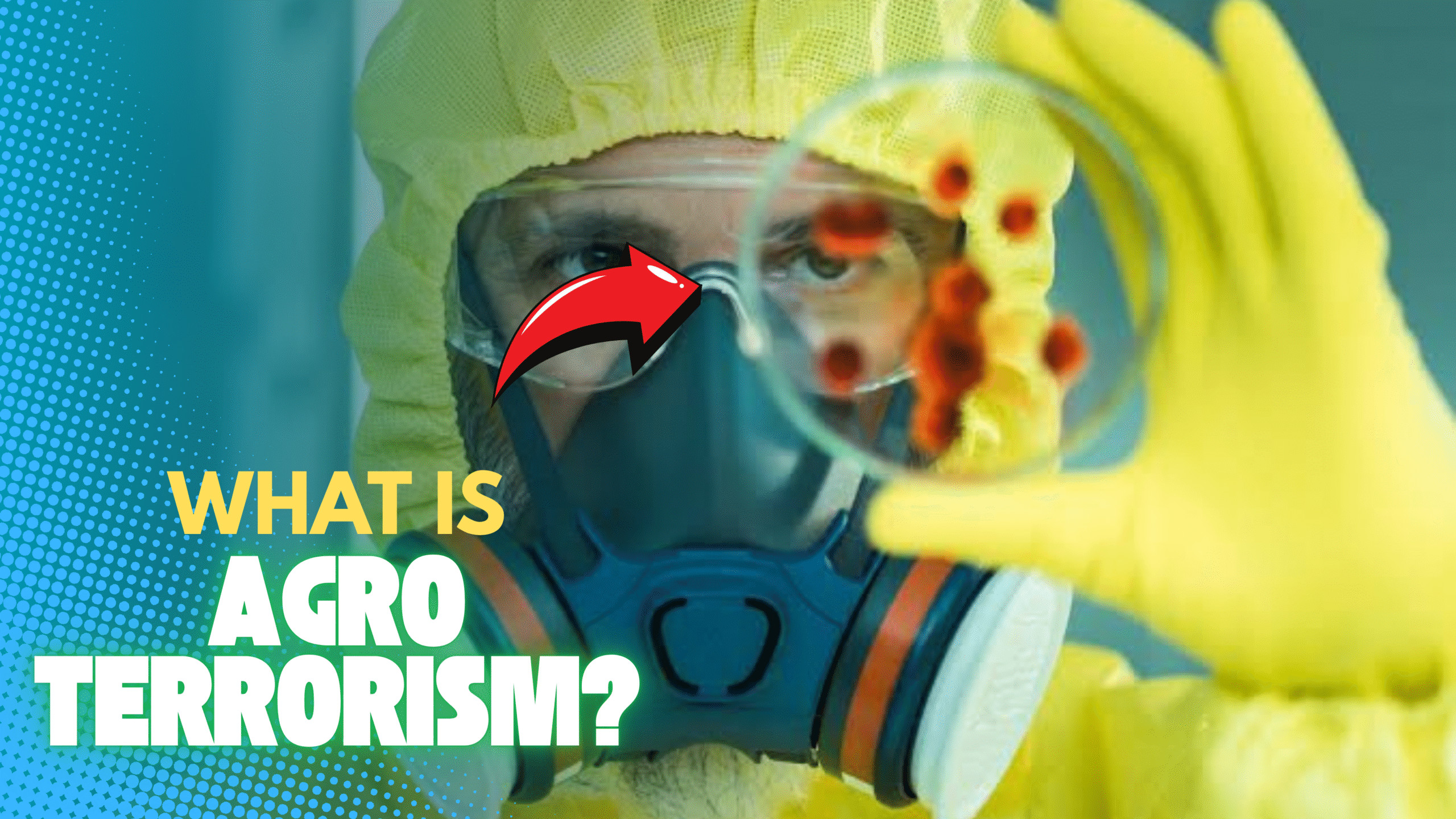In June 2025, the arrest of two Chinese nationals in the United States for allegedly smuggling Fusarium graminearum, a fungus labeled a “potential agroterrorism weapon,” thrust the obscure yet menacing concept of agroterrorism into the global spotlight. The incident, centered around accusations of attempting to compromise American agriculture, has reignited discussions about the vulnerability of food systems to deliberate biological attacks. This article explores the nature of agroterrorism, its historical context, the specifics of the recent case, and the broader implications for global food security.
What is Agroterrorism?
Agroterrorism, or agricultural terrorism, involves the intentional introduction of pests, pathogens, or chemical agents into a nation’s agricultural or food supply chain to cause economic disruption, food shortages, or societal panic. Unlike conventional terrorism, which often targets human lives directly, agroterrorism aims to destabilize economies and governments by attacking the backbone of food production—crops, livestock, and food distribution systems. Its appeal lies in its low cost, difficulty of detection, and potential for widespread impact, as agricultural systems are often dispersed and less fortified than military or financial infrastructures.
The consequences of agroterrorism can be devastating. Pathogens can decimate crops or livestock, leading to billions in economic losses, food price spikes, and trade restrictions. Toxins produced by certain pathogens can also harm humans, causing illnesses ranging from gastrointestinal distress to severe organ damage. The delayed nature of biological attacks—where effects may not be visible for weeks—makes attribution challenging, allowing perpetrators to evade accountability.
Historical Context of Agroterrorism
While agroterrorism is rare, historical precedents highlight its potential. One of the earliest documented cases occurred in 1984 in Oregon, when the Rajneeshee cult contaminated salad bars with Salmonella bacteria, sickening over 750 people to influence a local election. Though not strictly an attack on agriculture, it demonstrated how food systems could be weaponized.
During World War I, German agents allegedly used anthrax and glanders to infect livestock and contaminate animal feed destined for Allied forces, aiming to disrupt military supply chains. More recently, intelligence reports have suggested that groups like Al-Qaeda have explored agricultural pathogens as potential weapons, recognizing their ability to cause economic havoc without the logistical complexity of conventional attacks.
In 2020, unsolicited seed packets from China sent to households across the United States, India, and Japan raised suspicions of agroterrorism or a “brushing scam” designed to manipulate e-commerce ratings. While no harmful pathogens were confirmed, the incident underscored the ease with which agricultural systems could be targeted.
The 2025 Fusarium graminearum Case
The recent case involves Yunqing Jian, 33, a postdoctoral researcher at the University of Michigan, and her boyfriend, Zunyong Liu, 34, a researcher at a Chinese university. Both were charged with conspiracy, smuggling, false statements, and visa fraud for allegedly attempting to bring Fusarium graminearum into the U.S. in 2022 and 2024. The FBI and U.S. Department of Justice described the fungus as a “potential agroterrorism weapon” due to its ability to devastate cereal crops like wheat, barley, maize, and rice, and its toxins’ harmful effects on humans and livestock.
Fusarium graminearum causes head blight, a disease that reduces crop yields and contaminates grains with mycotoxins, which can lead to vomiting, liver damage, and reproductive defects in humans and animals. The fungus is responsible for billions of dollars in global agricultural losses annually. According to the FBI, Jian smuggled the pathogen in her boots in August 2022, while Liu was intercepted at Detroit Metropolitan Airport in July 2024 with red plant material in his backpack. Liu initially denied knowledge of the samples but later admitted he intended to use them for research at Jian’s University of Michigan lab.
U.S. authorities highlighted Jian’s ties to the Chinese Communist Party (CCP), noting that her phone contained a signed statement affirming her loyalty and that she received Chinese government funding for similar research in China. Liu, now in China, is unlikely to face arrest due to the lack of an extradition treaty between the U.S. and China. The case has been described as a “grave national security concern” by U.S. Attorney Jerome Gorgon Jr., with FBI Director Kash Patel warning of CCP efforts to infiltrate and target U.S. agriculture.
However, experts have questioned the agroterrorism label. Fusarium graminearum is already prevalent in North America, particularly in wheat- and barley-producing states, and has been established in the U.S. for over 125 years. It is not listed as a select agent by the U.S. Department of Agriculture, unlike pathogens considered high-risk for bioterrorism. Caitlyn Allen, a professor emeritus at the University of Wisconsin-Madison, argued that the fungus’s widespread presence makes it an unlikely candidate for deliberate weaponization, unless the smuggled strains were genetically modified for greater virulence or resistance.
Implications and Controversies
The case has fueled U.S.-China tensions, with some calling for the revival of the China Initiative, a Trump-era program aimed at countering Chinese espionage in U.S. academia and industry. Critics of the initiative argue it unfairly targeted Chinese researchers, while supporters see it as necessary to address national security threats. Posts on X reflect public alarm, with users describing the incident as a deliberate attempt by China to undermine U.S. food security, though these sentiments lack conclusive evidence.
The incident highlights the dual-use nature of agricultural research. While Jian and Liu may have intended to conduct legitimate studies, the potential misuse of pathogens underscores the need for stricter oversight of biological materials crossing borders. The University of Michigan has stated it is cooperating with law enforcement and has not received Chinese government funding related to the individuals’ research.
From a global perspective, agroterrorism poses a universal threat. Countries like India, with economies heavily reliant on agriculture, are particularly vulnerable. India has faced accusations of agroterrorism from Pakistan, though evidence remains anecdotal. The porous borders with hostile neighbors like China and Pakistan amplify the risk, making robust biosecurity measures critical.
Mitigating the Threat of Agroterrorism
Preventing agroterrorism requires a multi-faceted approach. Enhanced border controls and inspections can intercept smuggled pathogens, as demonstrated by Liu’s apprehension at Detroit airport. International cooperation is essential, given the transboundary nature of agricultural trade and the global spread of pests and diseases. The World Organisation for Animal Health and the Food and Agriculture Organization provide frameworks for monitoring and responding to agricultural threats, but enforcement varies by country.
Investing in resistant crop varieties and advanced diagnostics can reduce vulnerability. For instance, breeding wheat resistant to Fusarium graminearum or developing rapid-detection tools could mitigate the impact of outbreaks, whether accidental or deliberate. Public-private partnerships can accelerate these innovations, though funding remains a challenge in many nations.
Education and awareness are equally vital. Farmers, researchers, and policymakers must be trained to recognize signs of agroterrorism and report suspicious activities. The 2020 seed packet scare showed how public vigilance can aid authorities in identifying potential threats early.
Conclusion
The 2025 Fusarium graminearum case serves as a stark reminder of agroterrorism’s potential to disrupt food systems and economies. While the incident’s classification as agroterrorism remains debated, it underscores the fragility of agricultural infrastructure and the need for vigilance. As global populations grow and climate change exacerbates agricultural challenges, protecting food security against intentional threats is paramount. By strengthening biosecurity, fostering international collaboration, and advancing research, nations can safeguard their fields and plates from the silent menace of agroterrorism. The world cannot afford to ignore this growing threat, lest it finds itself facing a crisis far more insidious than any bomb or bullet.

